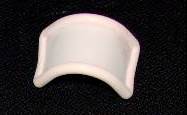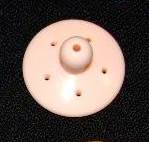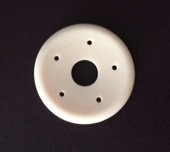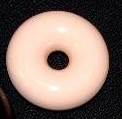Pessaries for Treatment of Pelvic Organ Prolapse
Authors
INTRODUCTION
Pessaries offer a safe, non-surgical option for the treatment of pelvic organ prolapse (POP). The aim of treatment in the management of POP is to decrease the frequency and severity of prolapse symptoms and to avert or delay the need for surgery.1 Pessary use may prevent worsening of the prolapse.2 Success rates, defined as continued pessary use in women who have a pessary fitted, range from 56 to 89% at 2–3 months3, 4, 5, and 56–68% at 6–12 months after insertion.6, 7 Many women continue to use a pessary for life. Besides POP, pessaries can also be used to treat urinary incontinence,8, 9 neonatal prolapse,10 vaginal wind11, 12 and to control symptoms of prolapse and incontinence during pregnancy.
While it is not possible to establish a global perspective of the full extent of pessary use, a survey of the members of the American Urogynecologic Society showed that 75% of surgeon members used pessaries as first-line therapy for POP. No clear consensus emerged regarding the type of pessary or indication for their use by these surgeons.1, 13 In the UK, a recent postal survey demonstrated that 87% of consultants (physicians) use vaginal pessaries for management of POP.14
INDICATIONS
Traditionally vaginal pessaries have been used as a treatment option for those with co-morbid medical conditions, those who still wish to bear children, as interim relief prior to surgery and for those who prefer non-surgical treatment. However, a recent study15 has shown that when pessaries are offered to patients with symptomatic POP, nearly two-thirds of women choose a pessary rather than surgery as initial management. Furthermore, there does not appear to be a difference in prolapse symptoms, bladder, bowel or sexual function when women who choose pessaries are compared to those who have surgery.6, 7 Therefore, although traditionally thought of as treatment only for women deemed unfit for surgery or infirm, pessaries are a viable treatment option for the majority of women in the initial management of POP.
TYPES OF PESSARIES
Vaginal pessaries can be broadly divided into two types: support and space-filling pessaries (Table 1).16 As there is no evidence to support the use of a specific type of pessary, choice is based on experience and trial and error. It is generally accepted that the ring pessary should be the first choice because of ease of insertion and removal, and low cost and, if this fails, other pessaries can be used. Clemons et al.17 found that the ring pessary is successful in grades II and III, but for higher grades, a Gellhorn pessary was more effective. By contrast, a randomized crossover trial of the ring versus the Gellhorn pessary, did not demonstrate any difference in effectiveness between the two types of pessaries.18 Support pessaries are generally easier to insert, allow sexual intercourse and are associated with less discharge or vaginal irritation than space-occupying pessaries.
Table 1 Different types of pessaries, their sizes and indication for use
Type of pessary |
Sizes (based on outside diameter) |
Suggested indications |
Pessaries for prolapse |
||
Support pessaries |
||
Ring |
Sizes 0 (44.5 mm) to 13 (127 mm) |
All types and stages of prolapse |
Gehrung |
Sizes 0 (38 mm) to 9 (83 mm) |
Cystoceles and rectoceles with or without uterine descent |
Space occupying pessaries |
||
Gellhorn |
Sizes 0 (38 mm) to 10 (95 mm) Two stems lengths: Long stem approximately 1.3 cm more than short stem |
Advanced prolapse with decreased perineal support |
Shaatz |
Sizes 0 (38 mm) to 10 (95 mm) |
Advanced prolapse |
Donut |
Sizes 0 (51 mm) to 8 (95 mm) |
Advanced prolapse |
Cube |
Sizes 0 (25 mm) to 7 (57mm) |
Advanced prolapse |
Inflatoball |
Sizes S (51 mm) to XL (70 mm) |
All types and stages of prolapse |
SUPPORT PESSARIES
Support pessaries lie along the vaginal axis providing a supportive shelf for the descending pelvic organs.19 The posterior component sits in the posterior fornix and the anterior component rests just under the symphysis pubis.
Ring
The ring pessary (Figure 1) is the most commonly used pessary20 probably because of the ease with which it can be used for both the patient and healthcare provider. Folding the pessary reduces its size and allows for easy introduction through the vaginal introitus. Its shape prevents collection of vaginal discharge and women can continue to engage in vaginal intercourse with the pessary in situ. The ring pessary with support (Figure 2) which is a closed, perforated ring pessary, is useful in cases of procidentia as the uterus cannot prolapse through the closed ring.
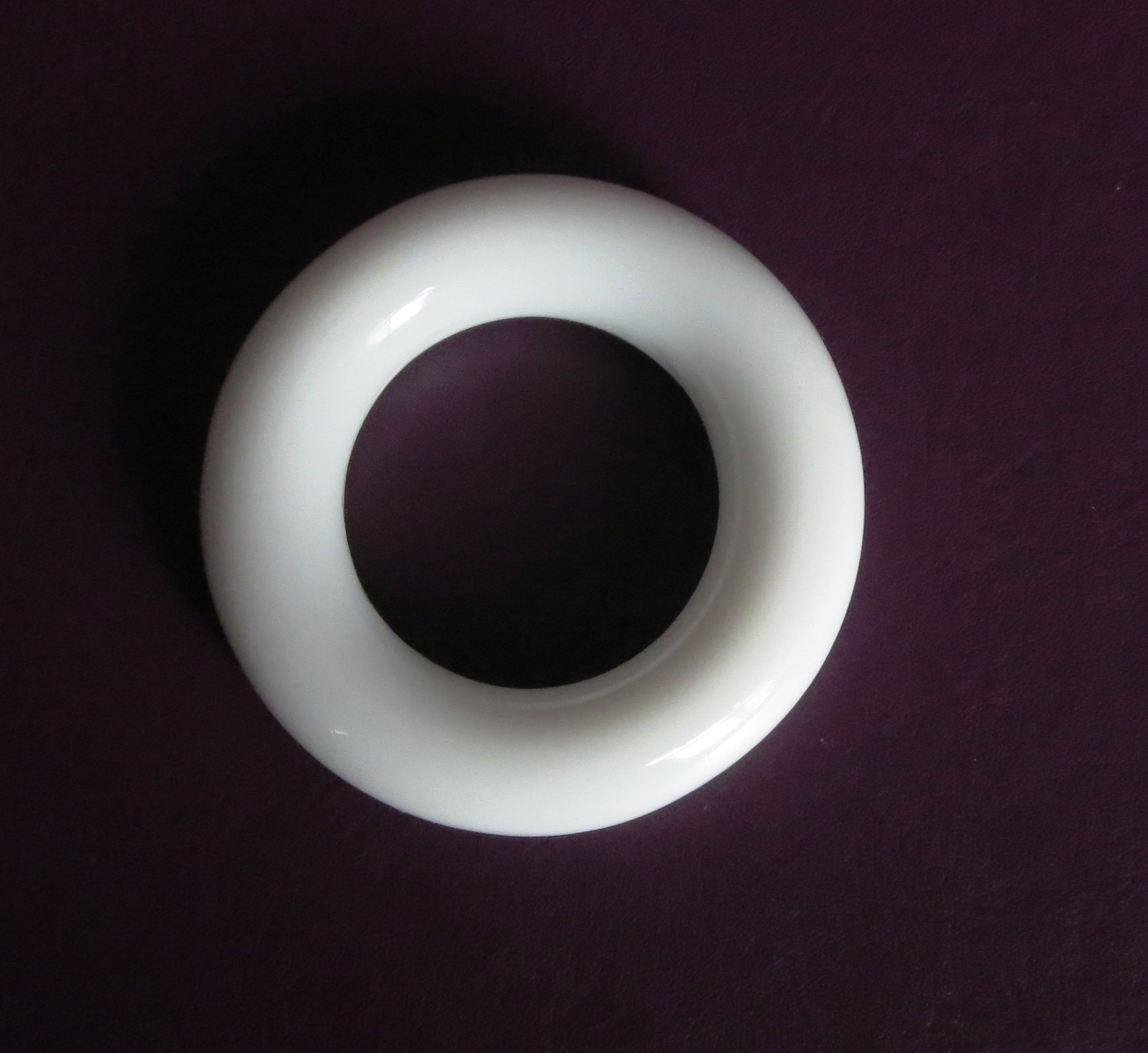 Fig. 1 Ring pessary without support
Fig. 1 Ring pessary without support
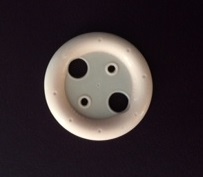 Fig. 2 Ring pessary with support
Fig. 2 Ring pessary with support
Gehrung
The Gehrung (Figure 3) is an arch shaped pessary with arms that can be manually molded to fit the prolapse. The pessary should be positioned with the convexity of the curved bars towards the vaginal wall depending on whether the prolapse is anterior or posterior.
SPACE-FILLING PESSARIES
Gellhorn
The Gellhorn pessary (Figure 4) is useful in higher grades of prolapse. The base is circular with a concave surface on the bottom and a convex surface on top, to which is attached a stem of varying lengths ending in a knob. The circular base has regular holes and the stem has a central hollow column to allow drainage of secretions. The concave surface is positioned against the vaginal cuff or the cervix and the stem lies along the axis of the vagina with the knob inside the introitus. Short stemmed variations are available for women with shorter vaginal lengths. The Gellhorn is not compatible with sexual intercourse.16
Shaatz
The Shattz pessary (Figure 5) is essentially a Gellhorn pessary without a stem and can be folded, although not as easily as the ring pessary. Removal of the Shaatz pessary is more difficult than removal of the simple ring pessaries as they have a suction effect similar to the base of the Gellhorn but do not possess a stem which can facilitate removal. This pessary is ideal for a woman who wishes to use the Gellhorn pessary but does not wish to handle it and is interested in preserving the possibility of intercourse.19
Donut
The donut pessary (Figure 6) is effective for the treatment for more severe stages of prolapse, especially if the perineal support is lax. Although the pessary is soft, it is difficult to alter its shape to facilitate insertion and removal. Intercourse is not possible with this type of pessary.
Cube
The cube pessary (Figure 7) is highly effective for higher stages of prolapse. It retains its position in the vagina by suction of its six concave surfaces on the vaginal wall. Daily removal and replacement is necessary as the suction can lead to severe erosions of the vaginal walls. The suction is broken by feeling along the string attached to the cube prior to removal of the pessary.
Inflatoball pessary
The shape of this pessary is similar to a donut pessary. The advantage of this pessary is that it can be deflated to facilitate insertion, and then re-inflated through the inflation tubing which can be tucked in the vagina. This type of pessary is often chosen for self-adjustment and for intermittent use according to the patient’s circumstances. It needs to be removed and replaced every 1–2 days. The major disadvantage is that it is made of rubber and therefore cannot be used in patients with latex allergies.16
PESSARY INSERTION
ASSESSMENT
Pessary fitting is achieved through trial and error. Correct fitting relieves patient symptoms, allows the patient to void and defecate, stays in place with activity and causes no discomfort to the patient. Various factors need to be taken into consideration prior to fitting a pessary as follows: (1) check whether the patient is sexually active with vaginal intercourse; (2) type and stage of prolapse; (3) ability of the patient to self-manage the pessary including assessment of hand strength, dexterity and ability to reach the vagina; and (4) ability to attend follow-up examinations. Contraindications to the use of pessaries include: (1) severe genital atrophy or narrowing; (2) undiagnosed vaginal bleeding and/or discharge; (3) current vaginal or cervical cancer; and (4) inability to comply with follow-up.16
TECHNIQUE OF INSERTION
At the initial visit, a pelvic examination is carried out to assess type and stage of prolapse and type and size of the pessary that would be suitable. Pessary size is determined in two steps.19 First, by manual examination, the length of the vagina from the posterior fornix to the pubic symphysis is determined. Second, the vaginal width or caliber is judged by spreading the index and the middle fingers horizontally at the level of cervix or vaginal vault. A combination of these two measurements permits selection of the appropriate pessary size for the initial fitting. Pessary size should be such that it should allow a single examining finger to be passed freely around the pessary circumference and should not be expelled on squatting or the Valsalva maneuver.
After insertion, expulsion should be checked for on movement, squatting, and carrying out the Valsalva maneuver. A pessary that is fitted too tightly may cause urinary retention and therefore the patient should be advised to void prior to leaving the clinic. Postmenopausal women should be given estrogen cream to apply locally in the vagina as this may minimize the occurrence of vaginal abrasion and erosions. The patient must be informed of potential complications and ideally should be given an information leaflet with contact details to access care if needed prior to the scheduled appointment. The importance of regular pessary changes should be highlighted. There is no consensus on the interval between pessary changes. However, periodic vaginal inspections to check for erosions are recommended and a follow-up appointment should be made depending on the local protocol which can vary from 6 weeks to 12 months.
EFFECTIVENESS OF PESSARY USE
Most studies demonstrate a remission in prolapse symptoms after successful pessary insertion.21 Bai et al.22 showed that 70% of users were satisfied or very satisfied with pessary usage and attributed their satisfaction to the remission of prolapse symptoms. Using a validated questionnaire, Fernando et al.5 showed a significant improvement of the symptom of awareness of a vaginal lump in 71% in patients fitted with the pessary 4 months after insertion. Clemons et al.23 reported a significant resolution of nearly all prolapse symptoms from baseline to 2 months: bulge (90% to 3%), pressure (49% to 3%), discharge (12% to 0%), and splinting (14% to 0%). In a prospective study by Wu et al.,3 56% of women with symptomatic POP had a pessary fitted successfully. Seventy seven per cent and 64% of those fitted were satisfied with their pessary at 6 months and 2 years after fitting, respectively.
Pessaries may prevent prolapse progression. Handa et al.,2 in a small series of patients comparing prolapse stage from the time of fitting to follow-up at 1 year, have shown that pessaries may improve the degree of prolapse after 1 year of usage. These findings attribute a therapeutic role for the vaginal pessary in addition to its traditional role in improving symptoms.
In addition to improvement in prolapse symptoms, bladder and bowel symptoms may improve after pessary use. In a prospective study, Abdool et al.6 demonstrated a significant improvement in prolapse, urinary and bowel symptoms as well as sexual function and quality of life 1 year after treatment of symptomatic POP with either pessary use or surgical correction. Similarly, using the Pelvic Floor Distress Inventory, Komesu et al.7 showed overall improvement of urinary symptoms in addition to prolapse symptoms among a cohort of women who continued their pessary use compared to a cohort of women fitted with their pessary, but who discontinued use. Bowel symptoms in this study were less likely to improve.
FACTORS THAT PREDICT SUCCESS AND FAILURE OF PESSARY USE
Using the Pelvic Floor Disorders Impact Questionnaire (PFDI-20), Komesu et al.7 established that a prolapse subscale score that fell to 50% of baseline at 2 months, best predicted continued pessary use. Older women have also been found to be more likely to continue pessary usage.4, 24 (Please cite Clemons et al old ref 24 in text) However, others have shown that a desire for surgery and stage III–IV posterior vaginal wall prolapse are both associated with discontinued pessary use and subsequent pelvic reconstructive surgery.4
Previous hysterectomy,5 increased parity,5 a short vaginal length17 and wide vaginal introitus17 which can occur after prolapse surgery and hysterectomy and SUI,25 were risk factors for pessary failure. Wu et al.3 in a prospective study of women with symptomatic POP who opted for pessaries, found that 58% of the women who complained of concomitant UI chose surgery for treatment of both their prolapse and SUI symptoms.
COMPLICATIONS
Minor complications associated with pessary insertion and use include vaginal discharge, ulcerations, excoriations, bleeding, pain, urinary and/or fecal impaction and pessary expulsion. Most complications are easily managed as follows.16
- Vaginal discharge or odor is usually due to a foreign body reaction. This can be managed by regular douching with with warm water. If persistent, Trimo-San vaginal gel 1–3 times a week can be used.
- Vaginal bleeding is usually due to abrasion, erosion or ulceration and is easily treated by removal of the pessary until the vagina heals. If the underlying cause is a tight pessary, this should be replaced with smaller pessary. Vaginal estrogen application should be prescribed to aid vaginal skin healing. If no abrasions or erosions are found to explain bleeding or if the bleeding does not resolve with treatment, and if uterus is present, endometrial biopsy should be taken.
- Pain or discomfort, urinary and/or fecal impaction can occur due to displacement or a pessary that is too large. In this situation the pessary needs to be repositioned or exchanged for a smaller size.
Rarely, a neglected pessary results in erosion into the bowel or bladder or it may become embedded in the vaginal wall as epithelial overgrowth and fibrosis may occur, making its removal difficult.25 Although extremely rare, serious complications of neglected pessary include vesicovaginal fistula,26 rectovaginal fistula,27 vaginal cancer,28 intravesical migration26 and ureteric obstruction.29
The conventional management of an impacted pessary is division of the epithelial band under anesthesia. However, this can lead to hemorrhage and injury to the bladder and bowel. A minimally invasive outpatient procedure without the need for a general anesthetic in the outpatient setting has been suggested.25 This involves division of the exposed fibrotic ring and sliding the ring through the vaginal epithelial channel. The epithelial tunnel can be left intact to minimize the risk of bleeding and infection.
CONCLUSION
Pessaries offer a safe, non-surgical option for the treatment of pelvic organ prolapse and should be offered as an option for patients with bothersome symptoms of prolapse. Various types of pessary are available with reasonable success rates and minimal complications. Major complications are extremely rare and tend to occur with neglected pessaries.
REFERENCES
Adams E, Thomson A, Maher C, Hagen S. Mechanical devices for pelvic organ prolapse in women. Cochrane Database Syst Rev 2004;(2):CD004010. |
|
Handa VL, Jones M. Do pessaries prevent the progression of pelvic organ prolapse? Int Urogynecol J Pelvic Floor Dysfunct 2002;13:349-51. |
|
Wu V, Farrell SA, Baskett TF, Flowerdew G. A simplified protocol for pessary management. Obstet Gynecol 1997;90:990-4. |
|
Clemons JL, Aguilar VC, Sokol ER, Jackson ND, Myers DL. Patient characteristics that are associated with continued pessary use versus surgery after 1 year. Am J Obstet Gynecol 2004;191:159-64. |
|
Fernando RJ, Thakar R, Sultan AH, Shah SM, Jones PW. Effect of vaginal pessaries on symptoms associated with pelvic organ prolapse. Obstet Gynecol 2006;108:93-9. |
|
Abdool Z, Thakar R, Sultan AH, Oliver RS. Prospective evaluation of outcome of vaginal pessaries versus surgery in women with symptomatic pelvic organ prolapse. Int Urogynecol J Pelvic Floor Dysfunct 2010;22:273-8. |
|
Komesu YM, Rogers RG, Rode MA et al. Pelvic floor symptom changes in pessary users. Am J Obstet Gynecol 2007;197:620-6. |
|
Farrell SA, Baydock S, Amir B, Fanning C. Effectiveness of a new self-positioning pessary for the management of urinary incontinence in women. Am J Obstet Gynecol 2007;196:474-8. |
|
Robert M, Mainprize TC. Long-term assessment of the incontinence ring pessary for the treatment of stress incontinence. Int Urogynecol J Pelvic Floor Dysfunct 2002;13:326-9. |
|
Loret dM, Jr., Carpenter SE. Management of genital prolapse in neonates and young women. Obstet Gynecol Surv 1996;51:253-60. |
|
Krissi H, Medina C, Stanton SL. Vaginal wind - a new pelvic symptom. Int Urogynecol J Pelvic Floor Dysfunct 2003;14:399-402. |
|
Jeffery S, Franco A, Fynes M. Vaginal wind-the cube pessary as a solution? Int Urogynecol J Pelvic Floor Dysfunct 2008;19:1457. |
|
Cundiff GW, Weidner AC, Visco AG, Bump RC, Addison WA. A survey of pessary use by members of the American urogynecologic society. Obstet Gynecol 2000;95:931-5. |
|
Gorti M, Hudelist G, Simons A. Evaluation of vaginal pessary management: a UK-based survey. J Obstet Gynaecol 2009;29:129-31. |
|
Kapoor DS, Thakar R, Sultan AH, Oliver R. Conservative versus surgical management of prolapse: what dictates patient choice? Int Urogynecol J Pelvic Floor Dysfunct 2009;20:1157-61. |
|
Thakar R. Pessaries for treatment of pelvic organ prolapse and incontinence. Rogers R, Sung WV, Thakar R, Iglesia C (eds) Female Pelvic Medicine and Reconstructive Surgery: Clinical Practice and Surgical Atlas, Williams Gynecology, McGraw- Hill Education Ltd, 2013:339-52 |
|
Clemons JL, Aguilar VC, Tillinghast TA, Jackson ND, Myers DL. Risk factors associated with an unsuccessful pessary fitting trial in women with pelvic organ prolapse. Am J Obstet Gynecol 2004;190:345-50. |
|
Cundiff GW, Amundsen CL, Bent AE et al. The PESSRI study: symptom relief outcomes of a randomized crossover trial of the ring and Gellhorn pessaries. Am J Obstet Gynecol 2007;196:405-8. |
|
Selection of pessaries for pelvic organ prolapse. In: Scott Farrell, editor. Pessaries in clinical practice.London: Springer-Verlag; 2006. p. 32-45. |
|
Pott-Grinstein E, Newcomer JR. Gynecologists' patterns of prescribing pessaries. J Reprod Med 2001;46:205-8. |
|
Moore KN, Dumoulin C, Bradley C, Burgio K, Chambers T, Hagen S, Hunter KF, Imamura M, Thakar R, Williams K. Adult Conservative Management, in Abrams PH, Cardoza L, Khoury AE and Wein A: 5th Ed. 5thInternational Consultation on Urinary Incontinence, Plymbridge UK: Health Publication Ltd, 2013:1025-120. |
|
Bai SW, Yoon BS, Kwon JY, Shin JS, Kim SK, Park KH. Survey of the characteristics and satisfaction degree of the patients using a pessary. Int Urogynecol J Pelvic Floor Dysfunct 2005;16:182-6. |
|
Clemons JL, Aguilar VC, Tillinghast TA, Jackson ND, Myers DL. Patient satisfaction and changes in prolapse and urinary symptoms in women who were fitted successfully with a pessary for pelvic organ prolapse. Am J Obstet Gynecol 2004;190:1025-9. |
|
Friedman S, Sandhu KS, Wang C, Mikhail MS, Banks E. Factors influencing long-term pessary use. Int Urogynecol J Pelvic Floor Dysfunct 2010;21:673-8. |
|
Fernando RJ, Sultan AH, Thakar R, Jeyanthan K. Management of the neglected vaginal ring pessary. Int Urogynecol J Pelvic Floor Dysfunct 2007;18:117-9. |
|
Grody MH, Nyirjesy P, Chatwani A. Intravesical foreign body and vesicovaginal fistula: a rare complication of a neglected pessary. Int Urogynecol J Pelvic Floor Dysfunct 1999;10:407-8. |
|
Russell JK. The dangerous vaginal pessary. Br Med J 1961;2:1595-7. |
|
Schraub S, Sun XS, Maingon P et al. Cervical and vaginal cancer associated with pessary use. Cancer 1992;69:2505-9. |
|
Dasgupta P, Booth CM. Uraemia due to ureteric obstruction of a solitary kidney by a vaginal ring pessary. Scand J Urol Nephrol 1996;30:493-4. |


